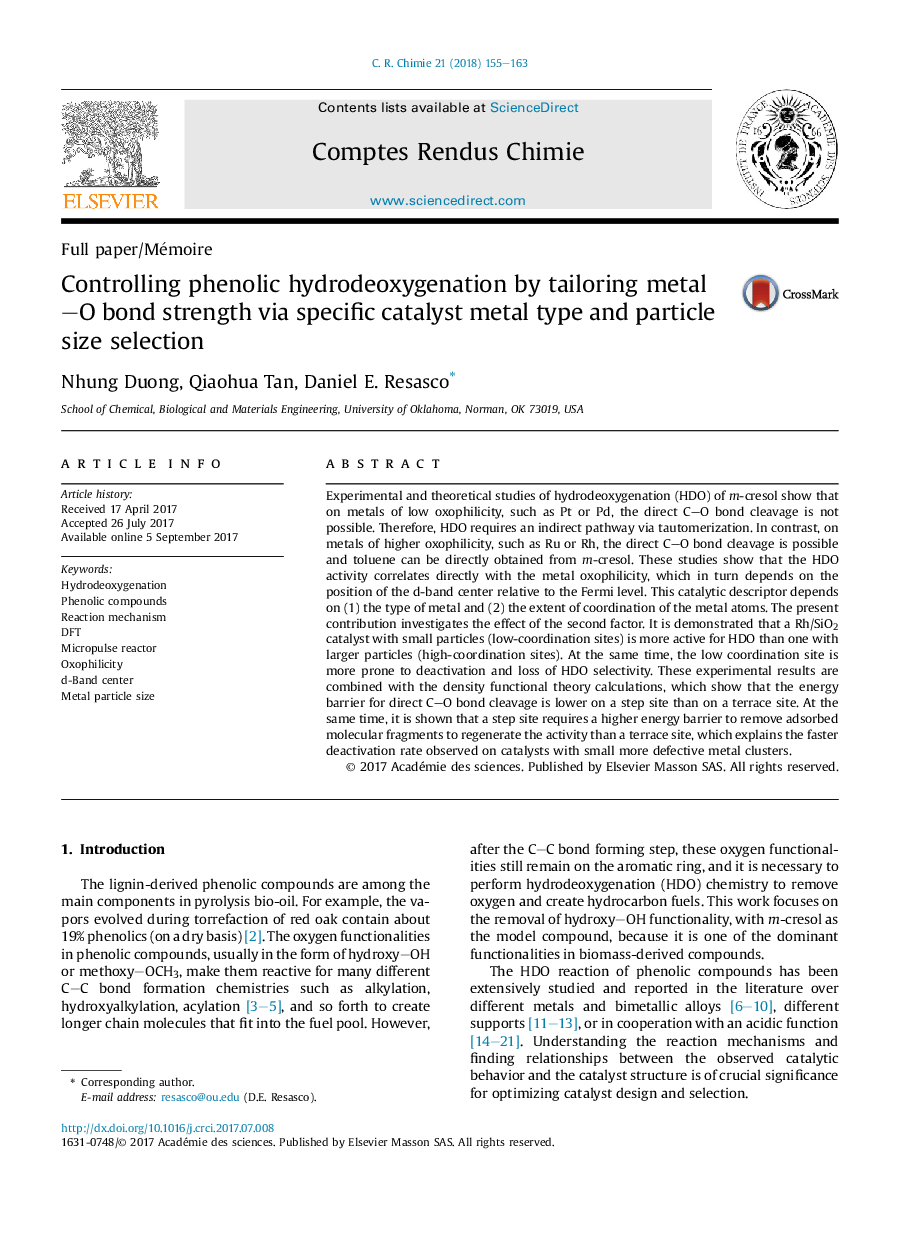| کد مقاله | کد نشریه | سال انتشار | مقاله انگلیسی | نسخه تمام متن |
|---|---|---|---|---|
| 6594446 | 1423666 | 2018 | 9 صفحه PDF | دانلود رایگان |
عنوان انگلیسی مقاله ISI
Controlling phenolic hydrodeoxygenation by tailoring metal-O bond strength via specific catalyst metal type and particle size selection
دانلود مقاله + سفارش ترجمه
دانلود مقاله ISI انگلیسی
رایگان برای ایرانیان
کلمات کلیدی
موضوعات مرتبط
مهندسی و علوم پایه
مهندسی شیمی
مهندسی شیمی (عمومی)
پیش نمایش صفحه اول مقاله

چکیده انگلیسی
Experimental and theoretical studies of hydrodeoxygenation (HDO) of m-cresol show that on metals of low oxophilicity, such as Pt or Pd, the direct CO bond cleavage is not possible. Therefore, HDO requires an indirect pathway via tautomerization. In contrast, on metals of higher oxophilicity, such as Ru or Rh, the direct CO bond cleavage is possible and toluene can be directly obtained from m-cresol. These studies show that the HDO activity correlates directly with the metal oxophilicity, which in turn depends on the position of the d-band center relative to the Fermi level. This catalytic descriptor depends on (1) the type of metal and (2) the extent of coordination of the metal atoms. The present contribution investigates the effect of the second factor. It is demonstrated that a Rh/SiO2 catalyst with small particles (low-coordination sites) is more active for HDO than one with larger particles (high-coordination sites). At the same time, the low coordination site is more prone to deactivation and loss of HDO selectivity. These experimental results are combined with the density functional theory calculations, which show that the energy barrier for direct CO bond cleavage is lower on a step site than on a terrace site. At the same time, it is shown that a step site requires a higher energy barrier to remove adsorbed molecular fragments to regenerate the activity than a terrace site, which explains the faster deactivation rate observed on catalysts with small more defective metal clusters.
ناشر
Database: Elsevier - ScienceDirect (ساینس دایرکت)
Journal: Comptes Rendus Chimie - Volume 21, Issues 3â4, MarchâApril 2018, Pages 155-163
Journal: Comptes Rendus Chimie - Volume 21, Issues 3â4, MarchâApril 2018, Pages 155-163
نویسندگان
Nhung Duong, Qiaohua Tan, Daniel E. Resasco,